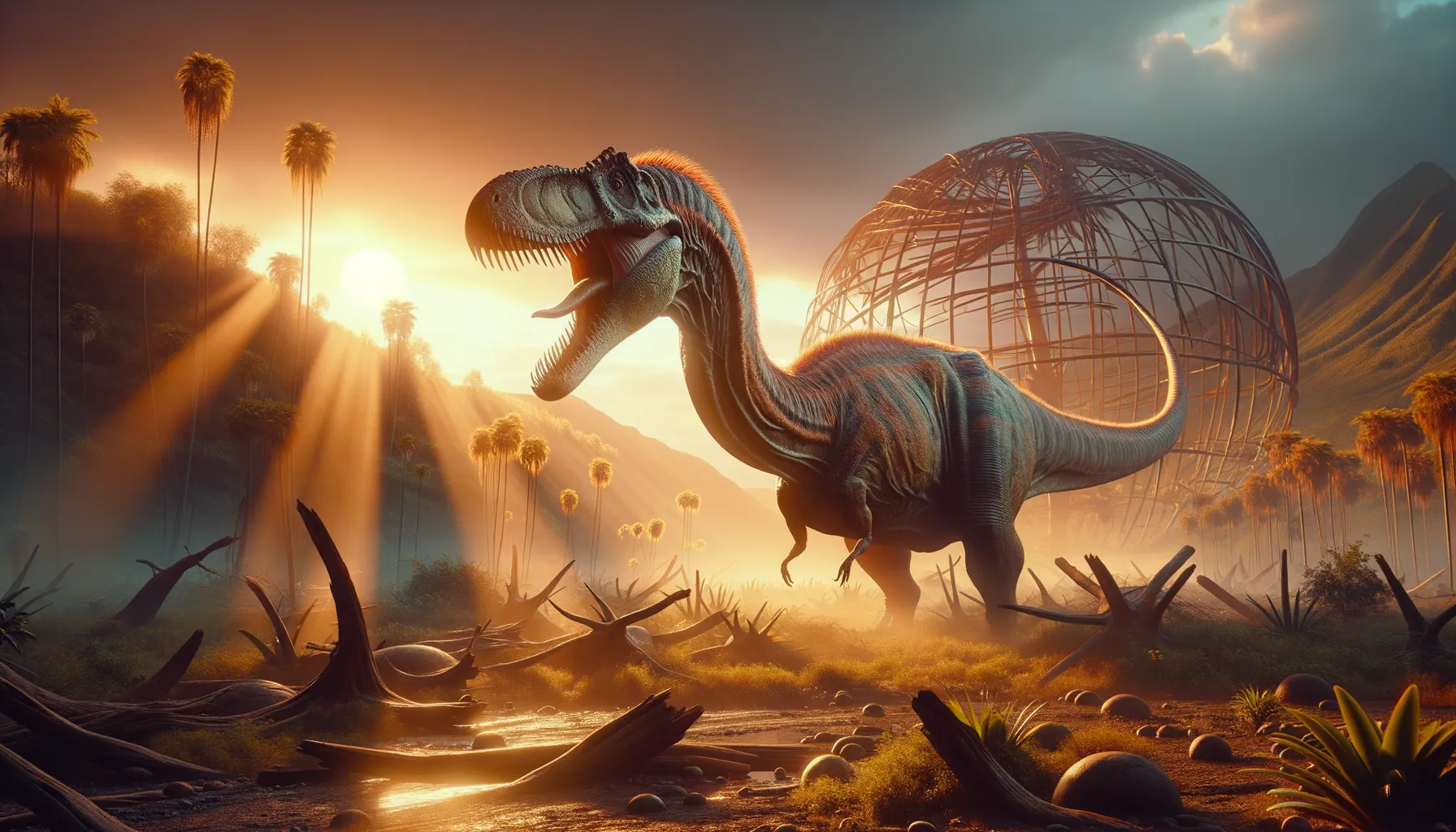
Campylodoniscus
A gentle giant from ancient times.
Period
Cretaceous
Length
Measured around 25 feet from head to tail.
Height
Stood approximately 9 feet tall at the shoulders.
Weight
Estimated to weigh around 2-3 tons.
Campylodoniscus was a medium-sized herbivorous dinosaur that roamed South America during the Cretaceous period. Known primarily from partial remains, this creature was characterized by its unique dental structure, which helped identify its eating habits. As a member of the sauropod family, it likely lived in herds and fed on the abundant vegetation of its environment.
Diet
Campylodoniscus was primarily a herbivore, feeding on ferns, cycads, and other low-lying vegetation. Its specialized teeth were adapted to grind and process tough plant materials efficiently.
Hunting
As a herbivorous dinosaur, Campylodoniscus did not hunt. Instead, it foraged for plant material, relying on its ability to identify and reach various types of vegetation within its habitat. Its large size offered some protection against predators.
Environmental challenges
During its time, Campylodoniscus faced environmental changes such as shifting climates and evolving ecosystems. The Cretaceous period was marked by varying temperatures and the occurrence of natural events like volcanic activity. These challenges would have impacted plant abundance, requiring the dinosaur to adapt its diet. Predation was another challenge, as it coexisted with carnivorous species that preyed on weaker members of its herd.
Speed
Relatively slow-moving, likely due to its size.
Lifespan
Estimated to have lived for several decades.
First discovery
Discovered in the early 20th century in South America.
Fun Facts
- Campylodoniscus was a plant-eating dinosaur that lived during the Late Cretaceous period.
- Its fossils have been found in what is now Argentina, providing clues about its habitat and lifestyle.
- Campylodoniscus had a long neck, which helped it reach high vegetation to feed.
- This dinosaur is part of the sauropod family, making it a distant relative of famous giants like Brachiosaurus and Diplodocus.
- Despite its size, Campylodoniscus had relatively small teeth, suggesting it may have relied on other ways to digest plants.
- The name 'Campylodoniscus' means 'little curved tooth,' describing the shape of its teeth.
- It lived around 70 million years ago, sharing its world with other Cretaceous creatures.
Growth and Development
Campylodoniscus likely experienced rapid growth during its juvenile years, a common trait among many large dinosaurs. As it matured, its growth rate would have slowed, focusing on achieving full size for survival. Nutrient-rich diets were essential for its development. This dinosaur's growth patterns offer insight into its life stages, from hatchling to adult.
Habitat
It inhabited lush, forested areas with plentiful water sources. The environment provided an array of plants that supported its dietary needs. Seasonal changes would have affected the available vegetation, influencing its movement patterns. This dinosaur thrived in environments where plant life could support its significant herbivorous diet.
Interaction with other species
Campylodoniscus likely interacted with other sauropods, possibly forming mixed-species herds for mutual protection. It coexisted with various carnivorous species, which posed a threat to its survival, especially to young or sick individuals. These interactions would have influenced its behavioral adaptations for defense and resource acquisition.
Natural lifespan
Campylodoniscus had a natural lifespan of several decades, typical for large dinosaurs.
Reproduction
Reproductive strategies likely included egg-laying, with nests built in concealed areas for protection from predators. Group nesting might have been common, increasing survival odds. Parental care post-hatching is uncertain, but some level of protection for juveniles could have been practiced.
Social behaviour
Campylodoniscus might have exhibited social behaviors typical of herd animals, including group foraging and communal defense against predators. Herd dynamics would have provided safety in numbers, influencing its social structure and interaction. Vocalizations and physical signals likely facilitated communication within or between groups.
Fossil locations
Fossils of Campylodoniscus have primarily been found in Argentina, offering insights into its existence in South America. The specific sites of discovery provide valuable information about its distribution and habitat preferences. These fossil finds contribute essential data to understanding the diversity and evolution of dinosaurs in this region.
